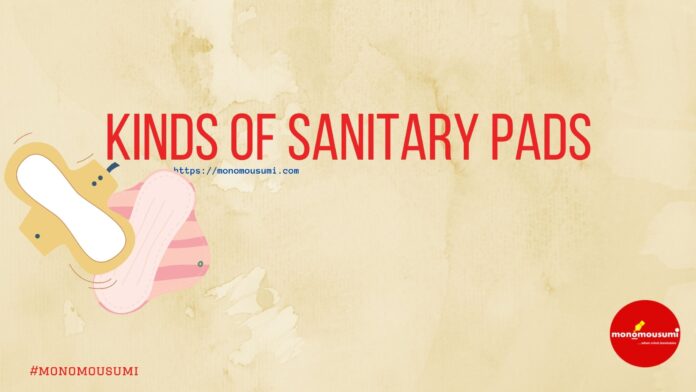One who reads the title of the essay may think that the essay is about some person, a friend. Yes, it is about a friend not a living one a thing which is a best companion for protecting her in the toughest day of the month. Usually speaking about this thing in public is considered awkward. But why should we try to hide it. We feel shy to speak openly about it and buy this thing from shop in men’s presence. Yes it is the sanitary pads also known as sanitary napkin, sanitary towel and menstrual pad.
Men always had a doubt about this when it is seen in shops and advertisement. Not only men even girls to have the same doubt until they reach a particular age. Sanitary pad a feminine hygiene product is defined as an absorbent item worn externally in the undergarment which absorbs the flow of blood at the time of menstruation. In India menstrual taboos had been followed from past and continuing in the present. Women were considered unclean at the time of menstruation cycle. In some traditional societies women are excluded or put in exile into outhouse or cattle sheds for five to seven days at the time menstruation and their presence is considered as embarrassing. In some societies it is considered as a protective measure for women. It gives women a space set apart from male gaze and from domestic pressure and unwanted sexual demand.
Before the invention of sanitary pads women used piece of cloth and practiced unhygienic methods like soil and mud to absorb the blood. When we look into the history about the invention of sanitary pads, it runs back to 10th century in Sudan. A woman named Hypatia who lived in 4th century AD thrown her used sanitary rags at an admirer as way to discourage him. The first disposable sanitary pads were invented not women but used for wounded soldiers to help them bleeding. It was commercially available from 1888. Benjamin Franklin invented the first disposable sanitary pads. It was brought to market by the American company Lister’s Towel owned by Johnson and Johnson. These pads used cotton as their major component. The design and materials used for manufacturing changed from 1980s to present.
Sanitary pads depending upon their use is divided into two: Disposable sanitary pads and Reusable sanitary pads.
| Disposable sanitary pads | Reusable sanitary pads |
| It can be disposed after using | It can be reused after washing |
| One time use only | It can be used for one year after cleaning it properly |
| It is made of bleached rayon, cotton, plastic, fragrance and gels. | It is made of fabric and cotton flannel |
| Invented in 1888 | Invented around 1970 |
| Lack of sufficient waste management after use result in harmful to environment when it is disposed:The plastic content is harmful when it is burned.It will not degrade in the soil.When it is flushed in toilets it may cause blockage.The price is comparatively low and affordable by woman. | Eco friendly as the materials used are mostly cotton clothes. It need to washed properly and dry it in sunlight. It had a long life. Properly maintained it is safe and comfortable. The initial price is high so it unaffordable by woman. |
| Examples –panty liner, ultra thin, regular, maxi/ super over night and maternity | Examples- All-in-one(AIO) pads and pocket or envelope pads |
The materials used for manufacturing pads are cotton, plastic, absorbent gels that are derived from petroleum industry and forestry. The main components in sanitary pads are:
- Back sheet- Polyolefin is the component used for making back sheet, which is used in clothing, straws and ropes.
- Absorbent core- This part is between back sheet and top sheet. This absorbent core may be a gel or cotton which is made from wood cellulose and absorbent foam.
- Top sheet- This one comes in direct contact with skin in often. The materials used for top sheet are polyolefin, zinc oxide and petrolatum. This petrolatum is often used in skin moisturizers.
- Adhesive – This component help the pad to stick to undergarment. This is prepared with FDA approved glues.
- Fragrances – The manufactures add fragrances which are placed underneath the absorbent core. Sometimes the chemicals used in fragrance are sensitive to woman skin. This part will not come in contact with skin.
In disposable sanitary pads a plastic layer is added to control the blood flow from leakage. The reusable sanitary pads are sewn locally using absorbent cloth with many layer of cloth. The commonly used reusable sanitary pad in India is Ecofemme. The commonly used disposable pads are Whisper, Stayfree, Vwash wow, and Sofy Anti Bacteria.
In developing countries women followed unhygienic practices because sanitary pads are unaffordable for about 300 million women. An Indian from Tamil Nadu Arunanchalam Muruganantham also known as menstrual man developed and patented a machine which could manufacture low cost disposable sanitary pads. Due to menstruation at least one in five Indian girls drop out of school, but discovery of low cost pads helped them to cop up with the situation.
Merits and demerits are common to a product. The merit of sanitary pads is it is the safe option at the time of over blood flow and comfortable at the time travelling. It also helps the user from unwanted smells that arise from body at this time. When we think about demerits, the disposable pads prevent skin from breathing which may result in irritation to skin or deteriorate vaginia, rashes, itching, swelling and redness. A pad can be used only for six to eight hours. If used for more hours there is a chance for formation of bacteria from the reaction of blood and chemicals in the sanitary pads. It is advisable to change the pad once in six hours. In a study it is estimated that 0.7%of skin rashes were from allegories raised from adhesive in pads. Friction caused from wearing a pad lead to irritation to sensitive skin.
A woman in her life time might use 6000 sanitary pads. The health issues that may raise from dioxin accumulate in the pads are immune system damage, diabetes, hormone dysfunction, pelvic inflammatory disease, ovarian cancer, infertility, birth defect due to the deodorants used in pads. Also there is cause of yeast infection which leads to complication on baby’s embryonic development. The short term exposure to dioxin can cause skin darkening which is altered to liver functioning. The reusable pads are considered safer but using it without proper cleaning will lead to health issues. These pads need to be washed properly and dry it in sunlight. The lack of clean water, space to dry and lack of facilities to change pads result in many other health issues.
Even if sanitary pads had many demerits woman switch over to these pads because it more comfortable and safer while comparing traditional ways. This invention helped girls and women to come out of the house without fear about menstruation. They can work for a long time with it.
It is true that sanitary pads are best friend to woman. It provides a self confidence to them. It helps them to shine in front of society in their difficult times. Sanitary pads become a basic necessity for every woman.
By ATHIRA. S, Palakkad
















